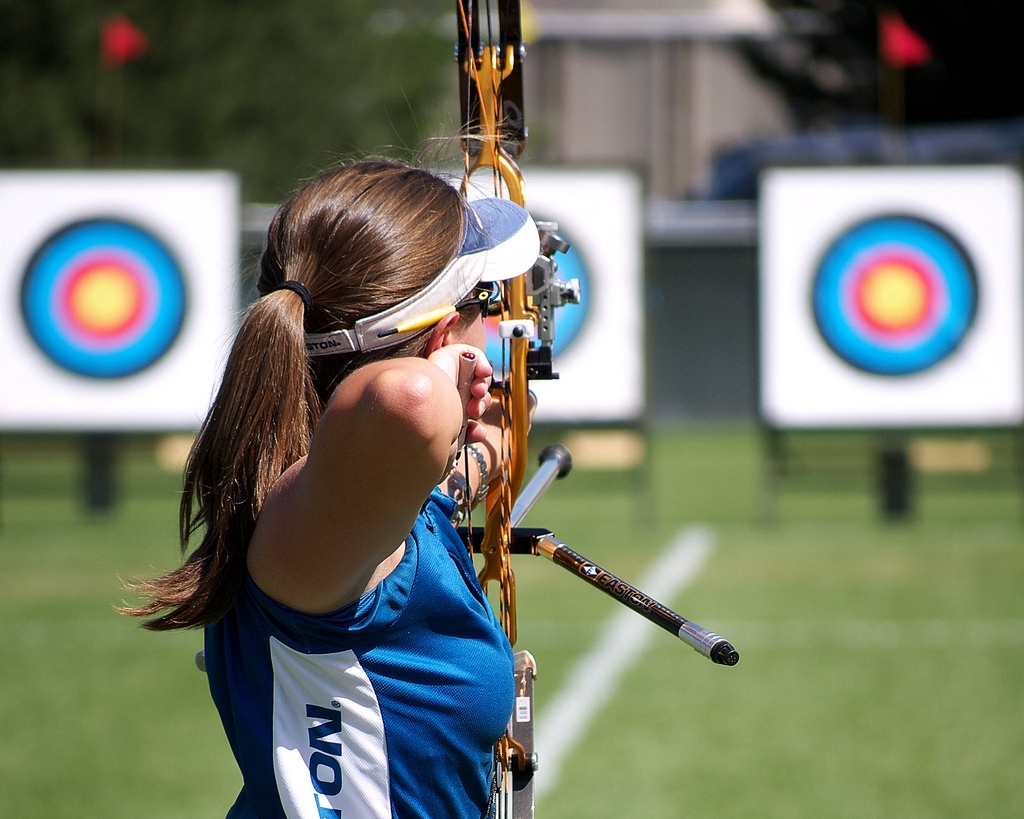Archery

Archery is an Olympic sport in which athletes compete in archery accuracy. The winner in archery is the athlete or team that scores the most points, according to the rules of the competition. Archery competitions are held between both men and women.
The International Archery Federation (Federation internationale de tir a l'arc, FITA) is a federation that unites 140 national federations, headquartered in Lausanne (Switzerland). The federation was founded in 1931.
History of the emergence and development of archery
The exact time of the appearance of the bow could not be established, as well as the places of its appearance. It is known for sure that people used bows at the end of the Stone Age and used it for hunting as a weapon. Thanks to onions, people were able to get meat food.
About 3 thousand years ago, the bow began to be used not only for hunting, but also as a weapon. Archers were very much appreciated, as they could hit targets for several hundred meters. Later, the bows were replaced by firearms, it was during this period that archery began to develop. In 1900, the first official archery competitions were held, and this happened at the second Olympic Games. Until 1972, this discipline was considered optional, in some years it was included in the program of the Olympic Games, and in some it was not. Despite the competition, there was no organization regulating archery. The International Archery Federation (FITA) was created only in 1931 in Poland, it subsequently developed the rules for holding competitions. In the mid-eighties, dueling duels were introduced, which were supposed to raise the spectacle of the competition. In 1988, team competitions were added to them. Since 2000, the rules of archery have been constantly changing, and each Olympic Games are held with changes in the program. Archery Rules Archery competitions are held both outdoors and indoors. Shooting at competitions is conducted in series of 3 or 6 arrows. According to FITA standards, a series of 3 arrows is given 2 minutes, and a series of 6 arrows gives 4 minutes.
At all competitions, qualification is first held, and then, among the remaining athletes, according to the Olympic system, the winner is played. This system is also relevant for the World and European Championships.
Archery is conducted on FITA-approved targets. Archery targets are made of paper with concentric circles of different colors depicted on it. Targets are attached to special shields, which are made of durable material that prevents the passage of arrows through. The size of the target depends on the competitive distance. Inside the "dozen" marked another circle of half the diameter, it is necessary to resolve controversial situations of equality of points and to fix world records.
Archery distances
Indoors, shooting is conducted from distances of 18, 30 or 50 meters (for men and women).
Outdoors, the distance to targets is 30, 50, 70 and 90 meters for men and 30, 50, 60 and 70 meters for women. At the Olympic Games, archery is conducted only from a distance of 70 meters.
Equipment and equipment
The main element of the equipment, of course, is the bow. In official competitions under the auspices of FITA, two types of professional bows are used in target shooting:
- Shooting from a (traditional) classic bow (recurve bow). The tension force of such a bow is about 15-20 kg. The speed of the arrow reaches 240 km / h. This bow is used at the Olympic Games.
- Compound bow shooting. Such bows use a special mechanism that provides the arrow with a more correct acceleration, and also facilitates the process of tensioning the bow. The tension force is about 25-30 kg. The flight speed of the arrow from such a bow reaches 320 km / h.
A fully loaded bow usually weighs in the range of three and a half to four and a half kilograms.
Modern sports arrows are composite (tip, pole, shank, plumage). For archers, the fit of arrows is very important. They must satisfy so many individual qualities, primarily the length of the arms. Arrows are folded into a special quiver for arrows.
The release is a trigger device. With its help, the archer captures the bowstring, and then, at the right time, releases it. The release minimizes the gripping area of the bowstring, which in turn reduces its deformation at full stretch and thereby increases the stability of shooting.
A archery kraga is a naruchi that protects the archer's forearm from being struck by a bowstring.
Refereeing
The number of judges in the shields should not be less than three, usually one judge is appointed for 7 boards. The duties of judges include:
- checking all field sizes and distances, sizes of targets and shields, height of targets;
- checking the equipment of athletes;
- control of firing;
- record results;
- addressing emerging issues;
- interruption of competitions if necessary;
- consideration of complaints and requests.
Archery
competitions
- The Olympic Games are the most prestigious archery competition, held once every four years.
- The World Open-Air Archery Championships are held every odd-numbered year.
- The Outdoor Archery World Cup is held annually.

- Arts
- Business
- Computers
- Jogos
- Health
- Início
- Kids and Teens
- Money
- News
- Recreation
- Reference
- Regional
- Science
- Shopping
- Society
- Sports
- Бизнес
- Деньги
- Дом
- Досуг
- Здоровье
- Игры
- Искусство
- Источники информации
- Компьютеры
- Наука
- Новости и СМИ
- Общество
- Покупки
- Спорт
- Страны и регионы
- World


